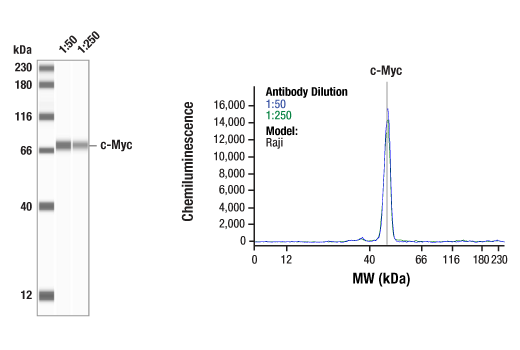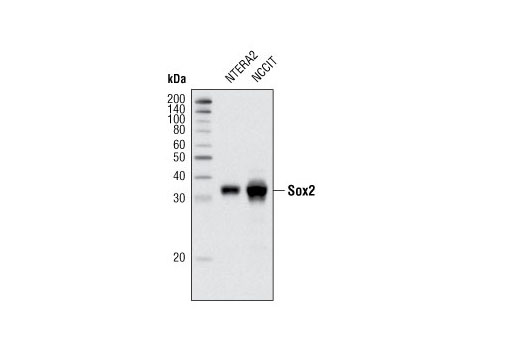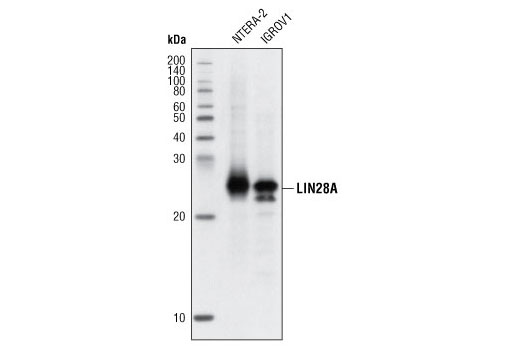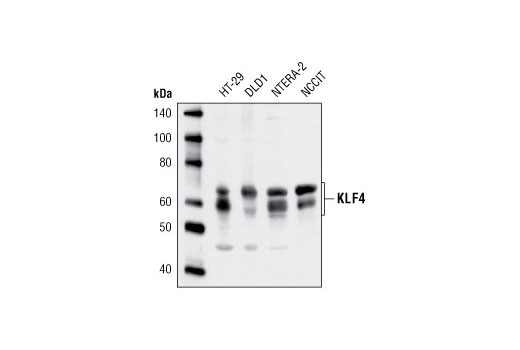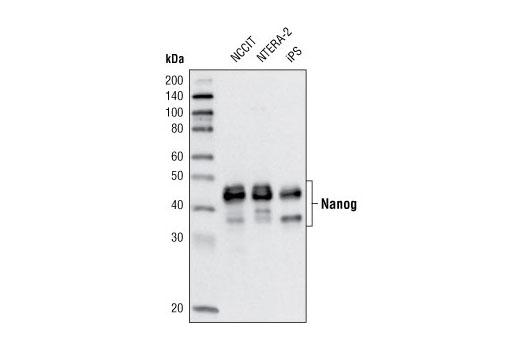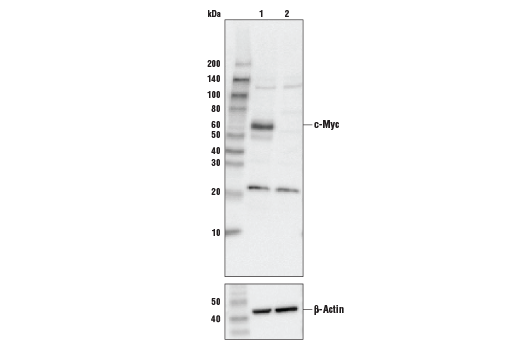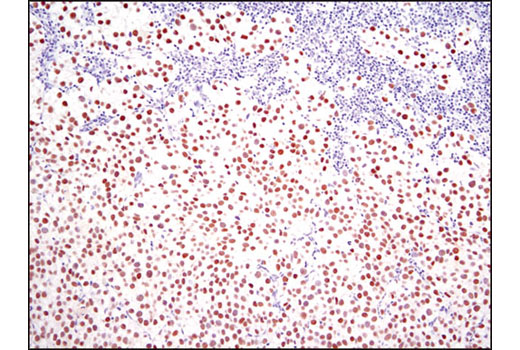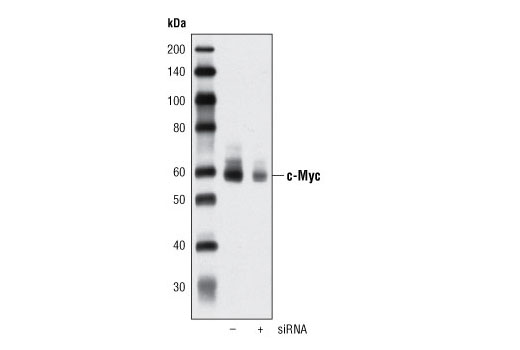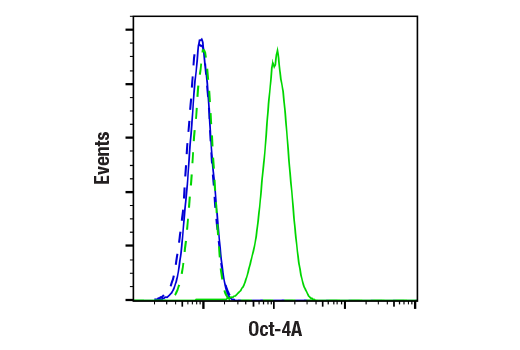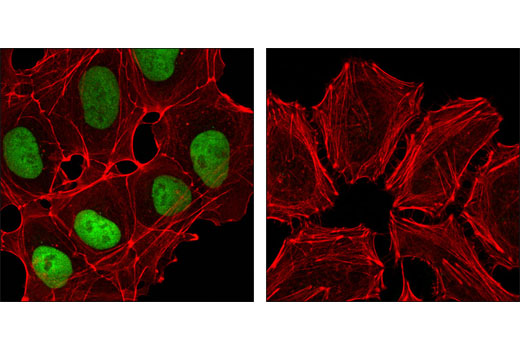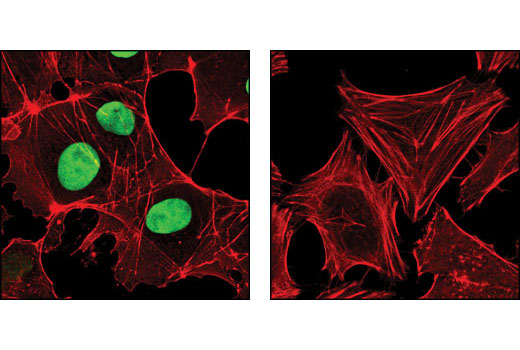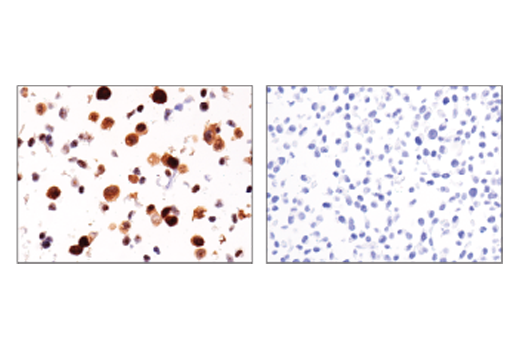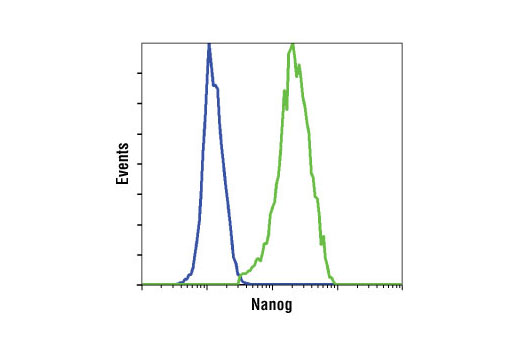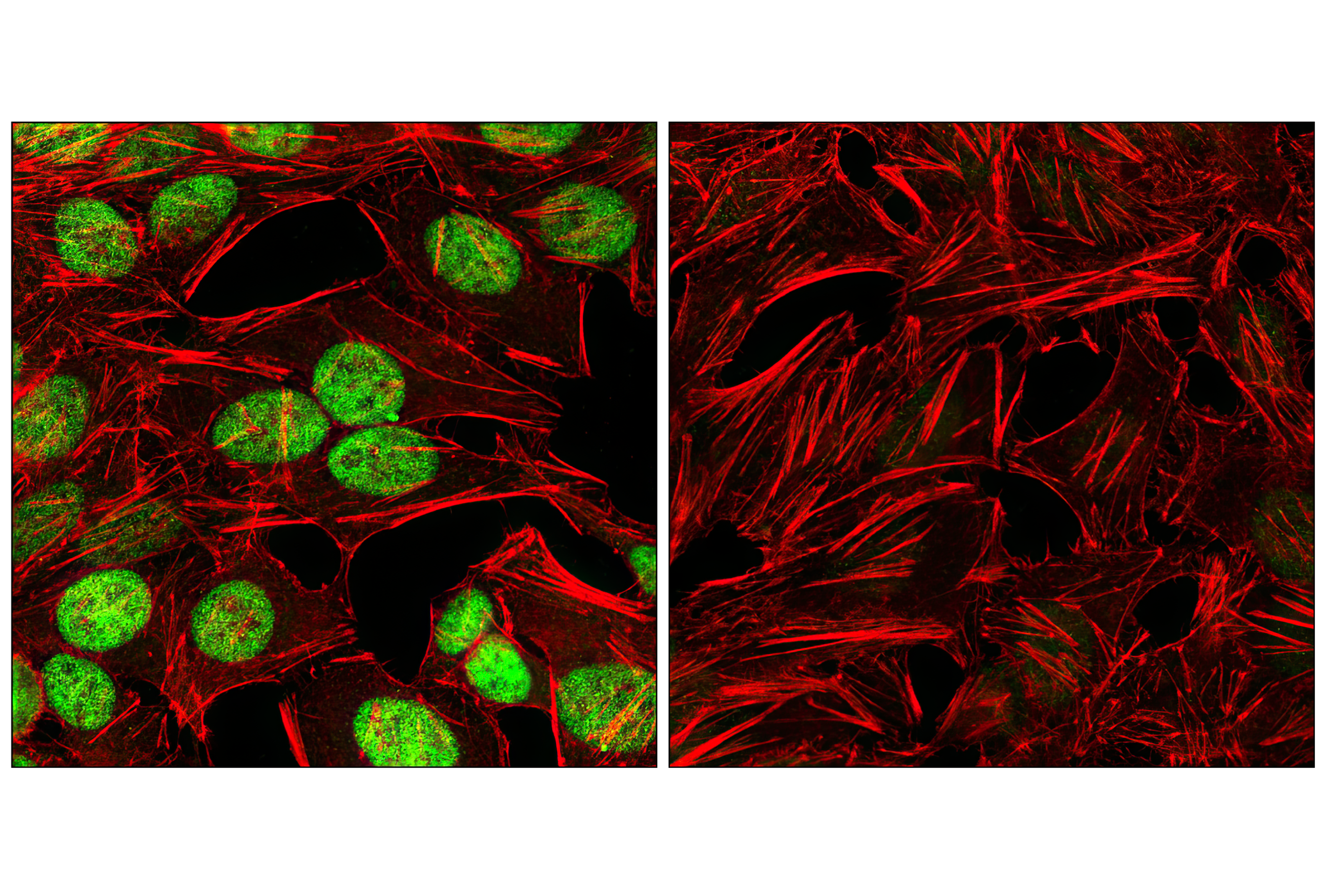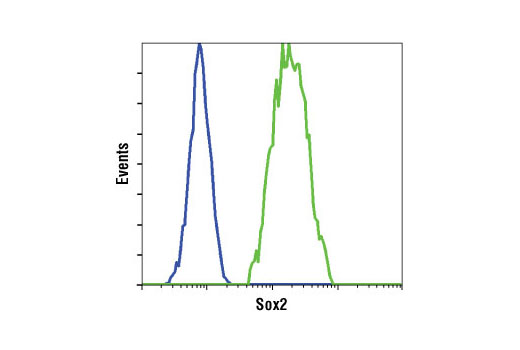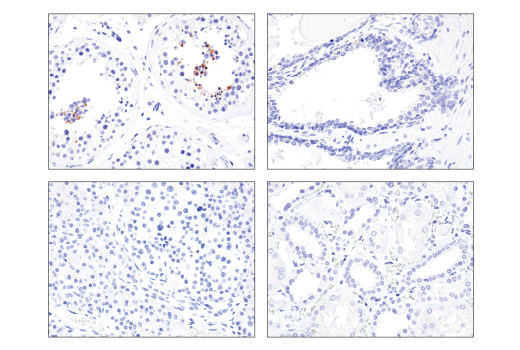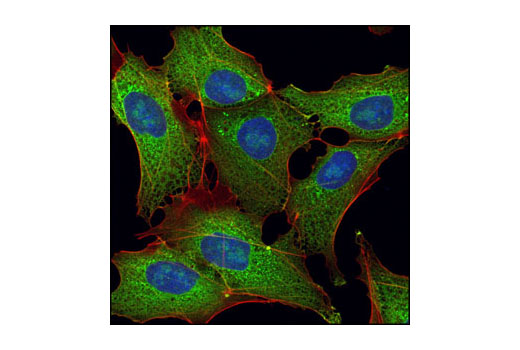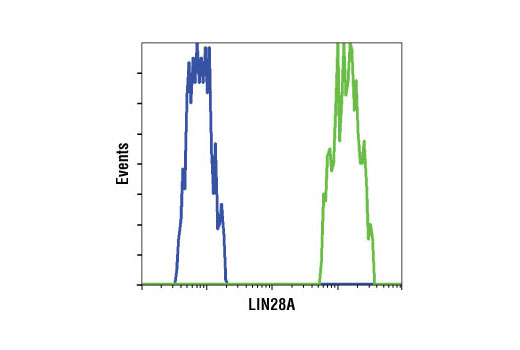| Product Includes | Product # | Quantity | Mol. Wt | Isotype/Source |
|---|---|---|---|---|
| Oct-4A (C30A3) Rabbit mAb | 2840 | 20 µl | 45 kDa | Rabbit IgG |
| Sox2 (D6D9) XP® Rabbit mAb | 3579 | 20 µl | 35 kDa | Rabbit |
| Nanog (D73G4) XP® Rabbit mAb | 4903 | 20 µl | 42 kDa | Rabbit IgG |
| LIN28A (D84C11) XP® Rabbit mAb | 3695 | 20 µl | 26 kDa | Rabbit IgG |
| KLF4 Antibody | 4038 | 20 µl | 65 kDa | Rabbit |
| c-Myc (D84C12) Rabbit mAb | 5605 | 20 µl | 57-65 kDa | Rabbit IgG |
Please visit cellsignal.com for individual component applications, species cross-reactivity, dilutions, protocols, and additional product information.
Description
The StemLight® iPS cell Reprogramming Antibody Kit contains a panel of antibodies for the detection of various proteins, combinations of which have been used to reprogram somatic cells to Induced Pluripotent Stem (iPS) cells. The kit can be used to track efficiency of expression of the reprogramming factors following transfection, viral transduction and other means of protein delivery. The kit components are pre-optimized for parallel use in immunofluorescent analysis at a standard dilution, but components are also validated for use in other applications --please refer to individual datasheet information for application specific recommendations. Enough reagents are provided for 160 immunofluorescent assays based on a working volume of 100 μl.
Storage
Background
Pluripotency is the ability of a cell to differentiate into cell types of the three germ layers, the endoderm, ectoderm and mesoderm. It is a property shared by embryonic stem cells, embryonic carcinoma and induced pluripotent cells.
Oct-4, Sox2 and Nanog are key transcriptional regulators that are highly expressed in pluripotent cells (1). Together they form a transcriptional network that maintains cells in a pluripotent state (2,3). Over-expression of Oct-4 and Sox2 along with Klf4 and c- Myc can induce pluripotency in both mouse and human somatic cells, highlighting their roles as key regulators of the transcrip- tional network necessary for renewal and pluripotency (4-5). It has also been demonstrated that overexpression of Oct-4, Sox2, Nanog and Lin28 can induce pluripotency in human somatic cells (6). Upon differentiation of pluripotent cultures, expression of Oct-4, Nanog and Sox2 is downregulated.
SSEA4, TRA-1-81 and TRA-1-60 antibodies recognize antigens expressed on the cell surface of all pluripotent cells. SSEA4 recognizes a glycolipid carbohydrate epitope (7). TRA-1-60(S) and TRA-1-81 antibodies recognize different proteoglycan epitopes on variants of the same protein, podocalyxin (8). These epitopes are neuraminadase sensitive and resistant, respectively. Reactivity of SSEA4, TRA-1-81 and TRA-1-60 antibodies with their respective cell surface markers are lost upon differentiation of pluripotent cells, corresponding with a loss of pluripotent potential (9).
- Looijenga, L.H. et al. (2003) Cancer Res 63, 2244-50.
- Pesce, M. and Schöler, H.R. (2001) Stem Cells 19, 271-8.
- Pan, G. and Thomson, J.A. (2007) Cell Res 17, 42-9.
- Takahashi, K. and Yamanaka, S. (2006) Cell 126, 663-76.
- Okita, K. et al. (2007) Nature 448, 313-7.
- Yu, J. et al. (2007) Science 318, 1917-20.
- Henderson, J.K. et al. (2002) Stem Cells 20, 329-37.
- Draper, J.S. et al. (2002) J Anat 200, 249-58.
- Schopperle, W.M. and DeWolf, W.C. (2007) Stem Cells 25, 723-30.
Background References
Trademarks and Patents
限制使用
除非 CST 的合法授书代表以书面形式书行明确同意,否书以下条款适用于 CST、其关书方或分书商提供的书品。 任何书充本条款或与本条款不同的客书条款和条件,除非书 CST 的合法授书代表以书面形式书独接受, 否书均被拒书,并且无效。
专品专有“专供研究使用”的专专或专似的专专声明, 且未专得美国食品和专品管理局或其他外国或国内专管机专专专任何用途的批准、准专或专可。客专不得将任何专品用于任何专断或治专目的, 或以任何不符合专专声明的方式使用专品。CST 专售或专可的专品提供专作专最专用专的客专,且专用于研专用途。将专品用于专断、专防或治专目的, 或专专售(专独或作专专成)或其他商专目的而专专专品,均需要 CST 的专独专可。客专:(a) 不得专独或与其他材料专合向任何第三方出售、专可、 出借、捐专或以其他方式专专或提供任何专品,或使用专品制造任何商专专品,(b) 不得复制、修改、逆向工程、反专专、 反专专专品或以其他方式专专专专专品的基专专专或技专,或使用专品开专任何与 CST 的专品或服专专争的专品或服专, (c) 不得更改或专除专品上的任何商专、商品名称、徽专、专利或版专声明或专专,(d) 只能根据 CST 的专品专售条款和任何适用文档使用专品, (e) 专遵守客专与专品一起使用的任何第三方专品或服专的任何专可、服专条款或专似专专
